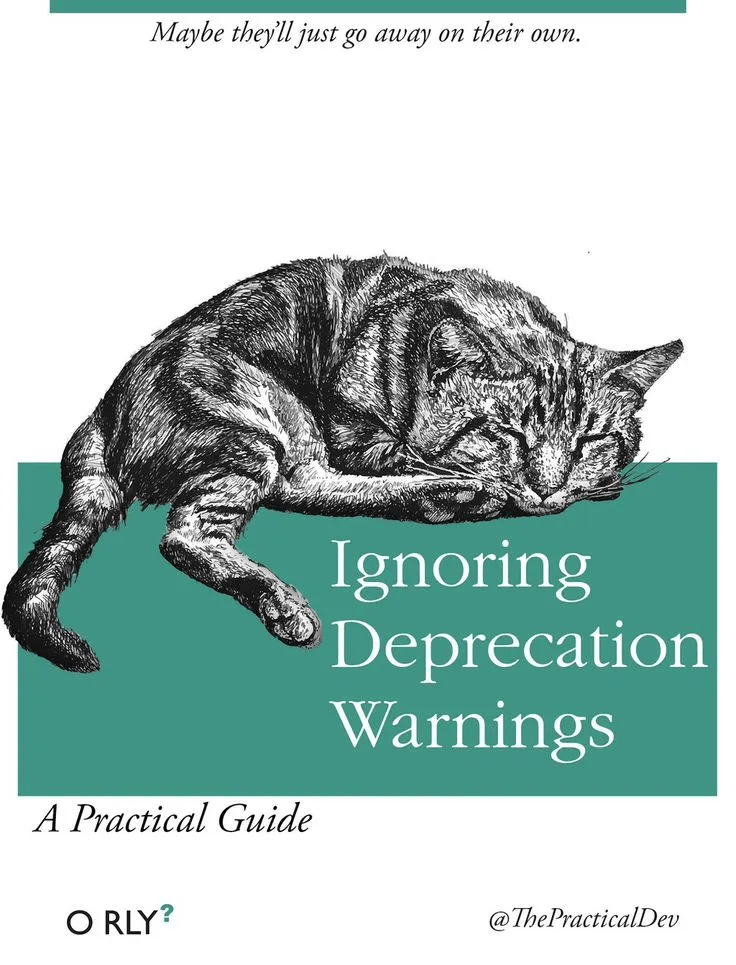
In the vibrant yet precarious landscape of Codeville, where digital constructs soar high and data rivers flow deep, there existed a practice as ancient as the first line of code ever written: Ignoring Deprecation Warnings. This habit, rooted in the eternal optimism of developers, was governed by a simple yet profound belief: "Maybe they'll just go away on their own."
Our story centers around a developer named Alex, known throughout Codeville for their prowess in navigating the intricate web of software development and their somewhat cavalier attitude towards the foreboding messages that often appeared in their console. These warnings, the heralds of impending obsolescence for certain functions and methods, were regarded by Alex not as urgent calls to action but as mere suggestions, whispers of a future problem that could, with a bit of luck, be avoided entirely.
As Alex embarked on the maintenance of a legacy system, a behemoth of code that had been patched, updated, and extended far beyond its original scope, they encountered a sea of deprecation warnings. Each message served as a testament to the system's age and the myriad dependencies that had grown around it like digital ivy.
"Maybe they'll just go away on their own," Alex mused, scrolling through the warnings with a mix of amusement and defiance. This mantra, a blend of hope and denial, became their shield as they navigated the treacherous waters of legacy code, patching here, tweaking there, all the while leaving the deprecation warnings unaddressed.
Days turned into weeks, and the system held together, seemingly indifferent to the ignored warnings that lurked within its depths. Alex's confidence grew, their belief in the temporary nature of the warnings validated by the system's steadfast performance.
However, the digital world is an unforgiving realm, governed by the inexorable march of progress. The day arrived when the warnings could no longer be ignored, their prophecies of obsolescence manifesting in the form of broken functionalities and cascading failures. The system, once a marvel of engineering, began to show its age, its neglected warnings now screaming errors that halted operations and sent Alex scrambling for solutions.
Faced with the consequences of their optimism, Alex embarked on a frantic quest to update, refactor, and rewrite. The task was Herculean, each deprecated function a puzzle box of logic that needed to be replaced, each outdated dependency a thread that, when pulled, unraveled connections and functionalities in ways both surprising and daunting.
Through trial and error, sleepless nights, and an ever-deepening respect for the importance of heeding deprecation warnings, Alex began to turn the tide. The legacy system was slowly brought into the modern age, its codebase strengthened and its dependencies updated to stand firm against the relentless advance of software evolution.
The tale of "Ignoring Deprecation Warnings: Maybe they'll just go away on their own" became a legend in Codeville, a cautionary story that echoed through the corridors of startups and the cubicles of tech giants. It served as a reminder to all developers that while the sirens of optimism and procrastination may sing sweetly, the rocks of reality lie in wait for those who choose to ignore the signs of change.
And so, Alex's journey taught them the value of vigilance, of facing warnings head-on, and of the constant vigilance required to navigate the ever-shifting landscape of software development. For in the world of code, as in life, the only constant is change, and the warnings we ignore today may well define the challenges we face tomorrow.